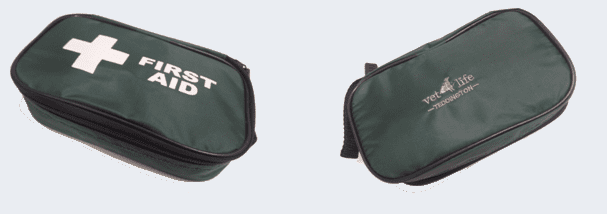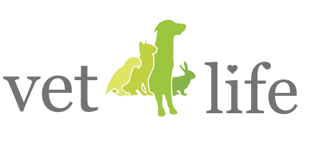 We were lucky enough to be entertained and informed by local vet Zara Boland last week, who delivered a great presentation on "Emergency First Aid for Pets".
We were lucky enough to be entertained and informed by local vet Zara Boland last week, who delivered a great presentation on "Emergency First Aid for Pets".
First and foremost, the best thing you can do in an emergency is not panic! Of course this is a lot easier said than done, but it's incredibly important to remain calm and act cautiously. Assess the situation and ask yourself whether there's anything you can do straight away or is it crucial to get to the vet immediately?
Remember, if in doubt, a vet is only ever a phone call away (24/7 hour care is available on 0208 977 3955).
What exactly is considered a pet emergency?
Some owners are more worrisome than others, so an emergency can vary depending on the owner. Typically, an emergency tends to occur when the vet practice is closed and when the problem cannot wait until the next morning.
Examples of veterinary emergencies include shock, collapse, choking or breathing difficulties, profuse bleeding, bloat (GDV), open fractures, penetrating injuries, prolonged seizures or even an allergic reaction of bites or stings.
As a veterinary practice, some emergencies we normally come across are:
- Road Traffic Accidents (RTAs), bleeding, open wounds and broken bones
- Seizures
- Heatstroke
- Bloat (GDV)
- Poisoning, vomiting and diarrhoea
- Fights and bites
- Stick injuries
- Eye injuries
- Allergic reactions
Vital signs
There are some simple tests you can do to check whether your pet is in pain or severely unwell:
Temperature
An animal's temperature is a quick way to check how they are. For dogs and cats, normal is about 38 C.
Pulse
A good pulse is strong and regular and felt on the left side of the chest (behind elbow) and just inside their thigh. Depending on size of dog, normal resting is between 60-130 beats per minute and for cats, normal is between 140-200.
Breathing
Observe their chest movement and the amount of effort involved - are they struggling?
Gum colour and hydration
Normal gums are pink and moist. Hydrated skin "pings" back when pulled rather than staying up and tenting.
Purchase a pet first aid kit
Would you like to buy a pet first aid kit? The kit contains saline for flushing wounds and eyes, alcohol wipe, thermometer, bandages and an information card with emergency numbers on.
Pop in to the clinic or call us on 020 8977 3955 (Teddington), 0208 390 5270 (Surbiton) or 01932 229 900 (Shepperton). We are selling them for £14.99 each.
Moving an injured pet
If the dog can walk, gently coax him or her into the car and help them in. If they can't walk, lift them into the car. You should lift small dogs by supporting their chest and hindquarters and large dogs should be rolled onto a blanket or firm board and carried on.
Cats should be wrapped securely in a towel and lift in the same manner as a small dog, holding close to your body. It's a good idea to use a cat carrier or similar.
Some of the most common scenarios we are asked about are Road Traffic Accidents and Bloat (GDV):
Road Traffic Accidents
These are every owner's worst nightmare. You should stay calm and call the vet in the first instance. Approach the animal from the front, avoiding sudden movements. Speak gently, using their name if possible. Check for shock and manage bleeding and broken bones, but always take them to the vet even if they appear uninjured - internal organ damage may not be obvious.
Bleeding and open wounds
- Apply direct and continuous pressure with clean material
- Bandage if possible
- If blood soaks through, apply extra layers
- Remember that bleeding often looks worse than it actually is.
Broken bones
If you can see bone ends or severe swelling or limb deformity, it's likely a bone is broken. It will be extremely painful so muzzle the animal before touching. Manage bleeding as above, DO NOT apply a splint, move with extreme care and use a firm board if there's a spinal injury. Keep cats and small dogs confined when in transport.
The best way to avoid RTAs is to always keep your dog on a lead when walking anywhere except in enclosed parks or other areas with no traffic.
Bloat (Gastric Dilation Volvulus)
This is a true emergency and is most common in large, deep chested dogs such as Irish Wolfhounds, Great Danes and St Bernards (although if you regularly read our postings it can happen in any breed, last week we successfully saved a Border Collie). You will observe a sudden bloated tummy (but not always), dribbling and drooling, gulping, retching, restlessness or pacing and collapse.
If untreated, bloat can be fatal so call the vet immediately if you have any doubt. The best advice to prevent bloat is to feed your dog small amounts frequently (not large meals) and never exercise them immediately after eating.
Be a Responsible Pet Owner
Even though having a pet is a lot of fun, it's an enormous responsibility. Domestic pets are completely dependent on their owners and having a pet means so much more than just providing water, food and shelter.
Be sure to...
- Have a pet collar with your number and your vet's number
- Always microchip and vaccinate
- Get pet insurance – emergency intensive care can be very expensive, increasing stress for everyone
- Carry a First Aid Kit if you can (we are selling these for £14.99 - ring us or pop in to the clinic to purchase one)
Remember - prevention is always better than cure.
If you suspect your animal is experiencing a veterinary emergency, please call Vet4life immediately on 020 8977 3955.


